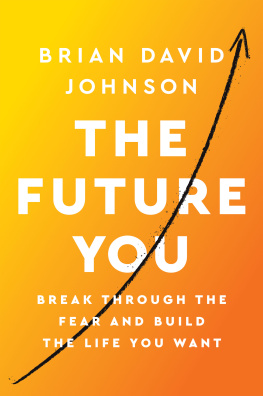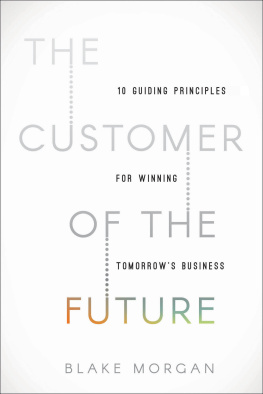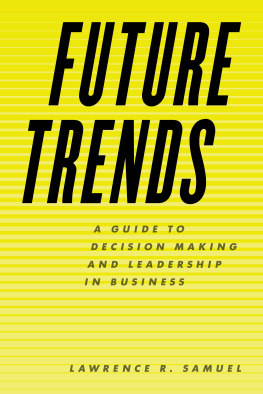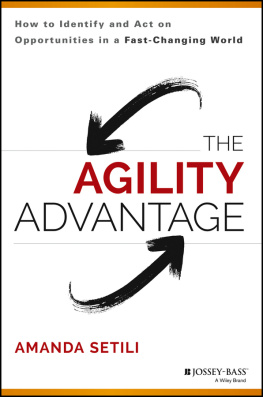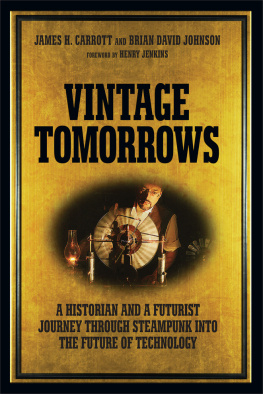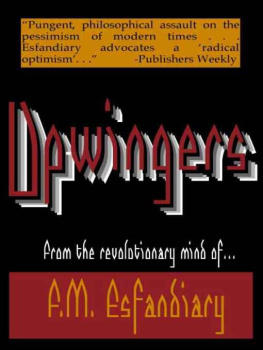Copyright 2012 by Cecily Sommers. All rights reserved.
Jacket design: Adrian Morgan
Author photo: Christopher Everett
Published by Jossey-Bass
A Wiley Imprint
One Montgomery Street, Suite 1200, San Francisco, CA 94104-4594 www.josseybass.com
No part of this publication may be reproduced, stored in a retrieval system, or transmitted in any form or by any means, electronic, mechanical, photocopying, recording, scanning, or otherwise, except as permitted under Section 107 or 108 of the 1976 United States Copyright Act, without either the prior written permission of the publisher, or authorization through payment of the appropriate per-copy fee to the Copyright Clearance Center, Inc., 222 Rosewood Drive, Danvers, MA 01923, 978-750-8400, fax 978-646-8600, or on the Web at www.copyright.com . Requests to the publisher for permission should be addressed to the Permissions Department, John Wiley & Sons, Inc., 111 River Street, Hoboken, NJ 07030, 201-748-6011, fax 201-748-6008, or online at www.wiley.com/go/permissions .
Limit of Liability/Disclaimer of Warranty: While the publisher and author have used their best efforts in preparing this book, they make no representations or warranties with respect to the accuracy or completeness of the contents of this book and specifically disclaim any implied warranties of merchantability or fitness for a particular purpose. No warranty may be created or extended by sales representatives or written sales materials. The advice and strategies contained herein may not be suitable for your situation. You should consult with a professional where appropriate. Neither the publisher nor author shall be liable for any loss of profit or any other commercial damages, including but not limited to special, incidental, consequential, or other damages. Readers should be aware that Internet Web sites offered as citations and/or sources for further information may have changed or disappeared between the time this was written and when it is read.
Jossey-Bass books and products are available through most bookstores. To contact Jossey-Bass directly call our Customer Care Department within the U.S. at 800-956-7739, outside the U.S. at 317-572-3986, or fax 317-572-4002.
Wiley publishes in a variety of print and electronic formats and by print-on-demand. Some material included with standard print versions of this book may not be included in e-books or in print-on-demand. If this book refers to media such as a CD or DVD that is not included in the version you purchased, you may download this material at http://booksupport.wiley.com . For more information about Wiley products, visit www.wiley.com .
Library of Congress Cataloging-in-Publication Data
Sommers, Cecily, 1961
Think like a futurist : know what changes, what doesn't, and what's next / Cecily Sommers. 1st ed.
p. cm.
Includes bibliographical references and index.
ISBN 978-1-118-14782-5 (cloth); ISBN 978-1-118-22585-1 (ebk.); ISBN 978-1-118-23917-9 (ebk.); ISBN 978-1-118-26382-2 (ebk.)
1. Business forecasting. 2. Strategic planning. 3. Diffusion of innovations. 4. New products. 5. Creative thinking. 6. Organizational change. I. Title.
HD30.27.S68 2012
658.40355 dc23
2012026748
To my family
for teaching me that
an interesting life
is what comes from having
an interest in life.
The best time to plant a tree was twenty years ago.
Chinese proverb
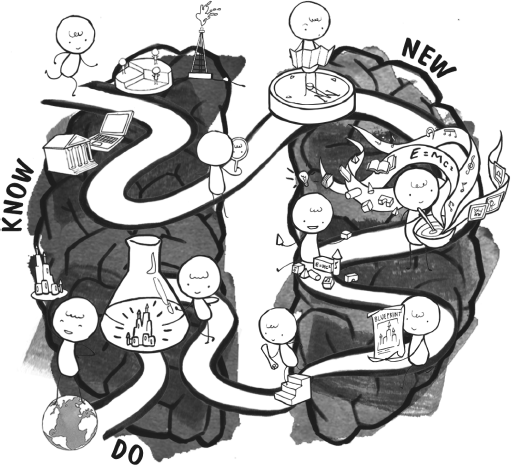
Introduction
Picture this: after a long day's work, you return to your hotel rooman underwater suite with glass walls that transform into computer screensand fall onto your bed, famished. You don't have to call room service. Instead, you grab your cell phone, touch a few keys, and hop in the shower. By the time you come out, you can smell your dinnera Kobe beef steak, cooked medium rare, and broccoli rabe sauted with red wine vinegar and garlicprinting out from the FAB Hub on your bedside table. After dinner, you check your message notifications, and are fascinated by a photograph of an enormous cockroach that a friend has sent from Madagascar. You could use some company, so, using the FAB Hub, you print out a 3-D cockroach robot, complete with six clicking metal legs and two wire antennae. Your new pet isn't an exact replica of the one that freaked out your friend; on a whim, you've given it a green Mohawk made of rug fibers, and the ability to sing on command. All you want now is a slice of hot apple pie fresh out of the printer. Can you smell the cinnamon in the air?
Can you see the future on the horizon?
If not, your resistance probably isn't prompted by an aversion to sweets or cockroaches, or what your kindergarten teacher unkindly referred to as your lack of imagination. The fact is, the future I've described is closer than you think. (The straight-out-of Star Trek FAB Hubs are already being used to generate human tissue for medical purposes.) But you are hardwired not to believe it, or even imagine it. Here's why: according to the most recent brain-imaging research, the same neural networks we use to envision the future are also used to recall memories. That means that most of us can only imagine what we already know.
Considering that prediction is the primary function of the brain and the foundation of intelligence, this biological efficiency can be seriously limiting. Our neural networks want what they want: certainty. This is a benefit of our wiring: it helps us feel prepared for the future, in control and confident. In short, it nurtures our sense of stability. But the future could not care less about our biological comfort zone.
What happens when an unstoppable force (the future) meets an immovable object (our brains)? The end of the world as we know it. The fallout from a failure to imagine on the part of corporate America can be devastating. Remember the 1990s tech darling AOL? Its merger with Time Warner was supposed to create the future of global media. Instead, the two companies remained stuck in their corporate cultures, resulting in a failure to meet the future that cost shareholders more than two hundred billion dollars. Or GM? The company had a head start on electric and hybrid vehicles, but decided to abandon its march forward in favor of lobbying government to keep energy regulations in line with the past. For both companies, the collision of the unstoppable force of the future with their unmovable corporate vision created crisis.
Were our brains wired differently, we would be more able to imagine the future as something other than a linear continuation of the past. The fact that we are biologically predisposed not to see what is coming is cold comfort. Just ask the thousands of autoworkers still looking for a job in Detroit, because their corporate leaders steered their companies into the future using the rearview mirror on a gas-guzzling SUV. Understanding our biology is not an excuse to accept it as destiny; it is an opportunity to push past our natural neural limitsin other words, to get unstuck.
This is what futurists do: we get people and organizations unstuck from what I call the Permanent Present, the natural bias for projecting current conditions out into the future. Over the years, I have worked to reverse that bias with such companies as American Express, Best Buy, General Mills, Kraft, Motorola, Nestl Purina, Target, Yahoo!, and other billion-dollar conglomerates seeking strategic foresight for success into the next millennium, as well as with mom-and-pop shops passionate about moving a long-standing family business into the next generation. No matter the size, product, challenge, or character of the corporation seeking help, I have encountered one constant: the push required to get clients past thinking in the Permanent Present is so strong that it feels literal. That is why I named the Minneapolis-based nonprofit think tank that I have spearheaded for several years the Push Institute.



